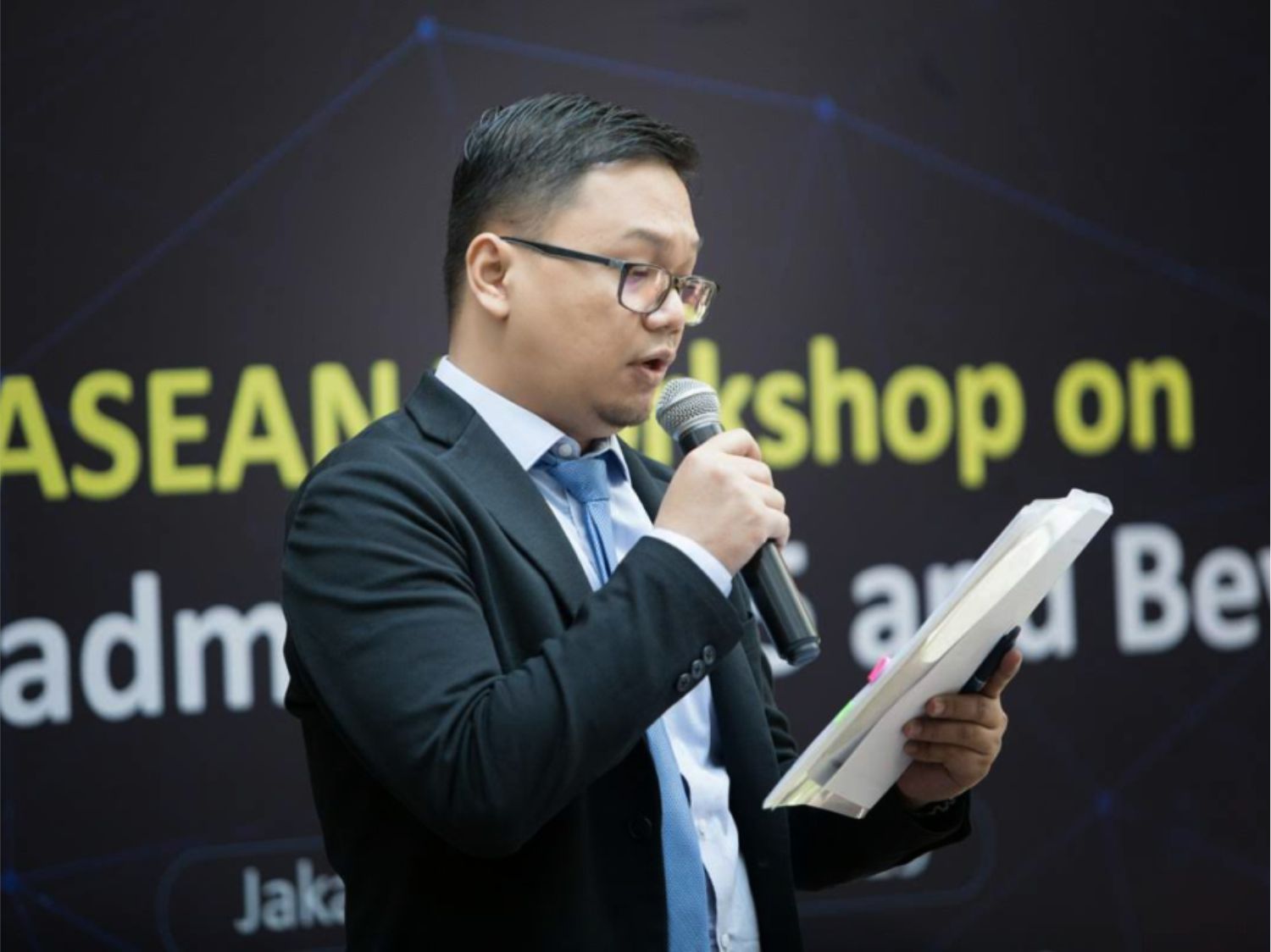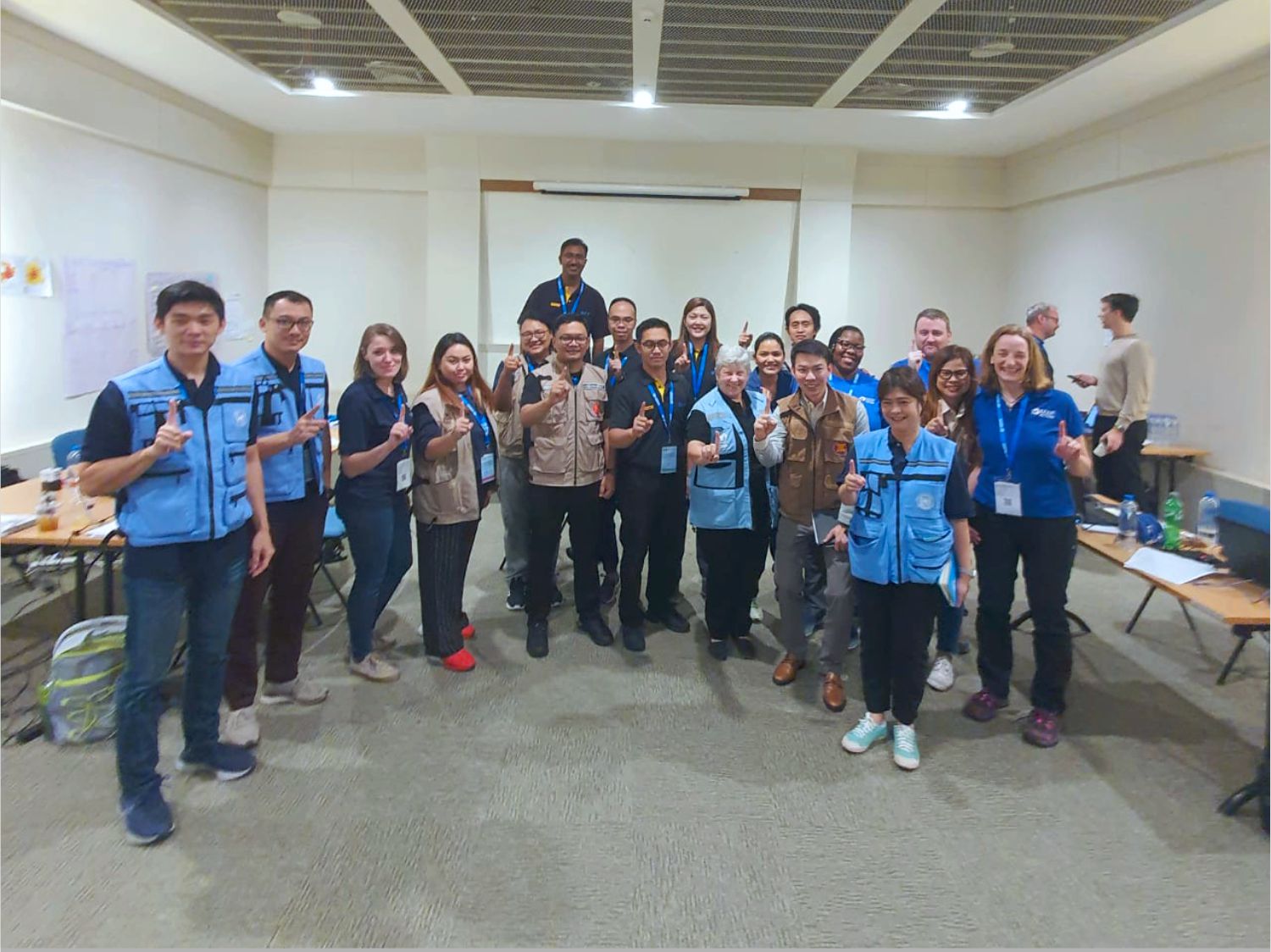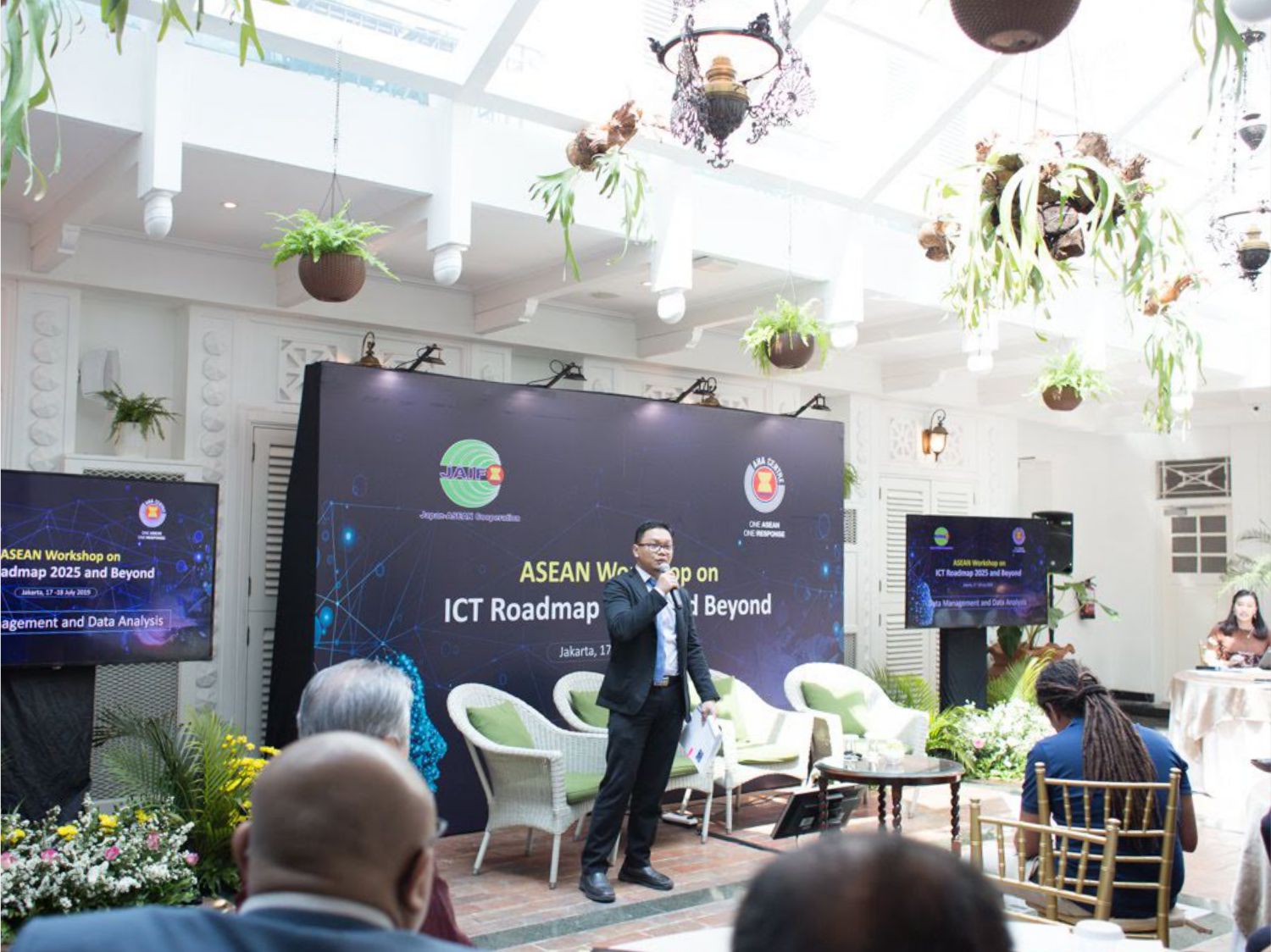
RISDIANTO IRAWAN
The AHA Centre’s own Risdianto Irawan – or Risdi as we know him – was first drawn to the disaster management field after feeling the huge earthquake that led to the 2004 tsunami, as he undertook his chemical engineering studies in Medan, Indonesia. Risdi recalls the significant increases in casualties being announced, and as numbers ticked over into 100,000 souls he decided to determine his path towards helping communities affected by disaster.
It was in these early years that Risdi realised the increasing need for information technology and computer programming within disaster management, as he took on various roles within IT and database work, finding himself working on such tasks in Aceh during 2007 as the region continued with its reconstruction and recovery phases. After numerous roles, Risdi moved to Jakarta and joined Mercy Corps, finding himself involved with the Indonesian Response Team and engaged in more direct disaster response. “I found myself working up into management and coordination during this time” he remembers, “then also having the opportunity to study courses in Africa, Jordan, Singapore, and also the Emerging Leadership Programme through Portland University’s School of Business”.
As Risdi’s work became more focused towards IT leadership and coordination, he made a move to the AHA Centre within a year of finishing studies at Portland University. He highlights the significant difference between his early roles and more recently, in particular the direct field engagement that has changed over time. “With organisations like Mercy Corps we had direct engagement in disaster, as we were in the field and responding” Risdi says. “As the AHA Centre works at the regional level and coordinates response, we find ourselves more often within National Disaster Management Organisations, helping and supporting their work in responding directly to communities.” Risdi notes the difference in preparation and engagement – in particular the contrast between stress management in fieldwork as compared to diplomacy approaches required at a coordination level.
Risdi has, however, continued to be challenged and engaged in response as part of his work with the AHA Centre. As an ASEAN Emergency Response and Assessment Team (ASEAN-ERAT) member, Risdi has been deployed to disasters to support teams during disasters such as the 2018 Sulawesi earthquake and tsunami, the 2020 Jakarta floods, and also to engage with the International Search and Rescue Advisory Group (INSARAG) 2019 exercise in Thailand. While he understands his role has changed, Risdi does believe that “while my contribution may be small working on Information Communication Technology (ICT) from the office, it still supports and has a great impact to those in the field”.
Throughout his experience, Risdi has witnessed the growing importance of ICT for disaster management, and particularly as part of the ASEAN regional context. He highlights its importance, both through simple yet integral instances such as telecommunication access during response, alongside the utilisation of Big Data in detecting, warning and information dissemination systems. Part of Risdi’s current work is determining how to further support the ASEAN-ERAT responders with modern and resilient telecommunications, and this is an area that forms a key focus for the AHA Centre’s recently published ICT Roadmap. Risdi also highlights the ongoing identification of Big Data’s extended role in disaster management, through its utilisation across disaster analysis, disaster prediction, and then into prescription. Risdi finishes by stating that this type of ICT work is not only for the AHA Centre and the ERAT programme, but that “I also hope this work can be utilised and have a positive impact in the future for other humanitarian actors, as well as ASEAN communities themselves”.
Written : by : William Shea | Photo : AHA Centre




